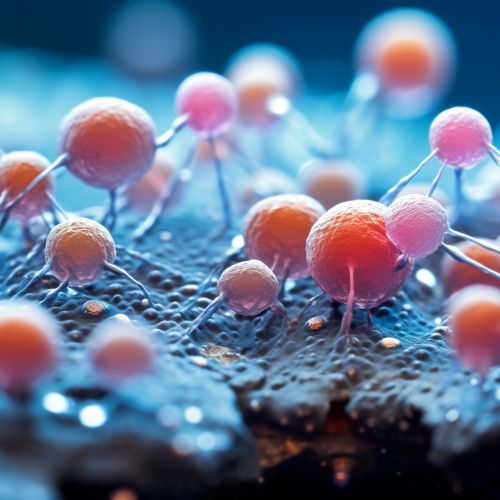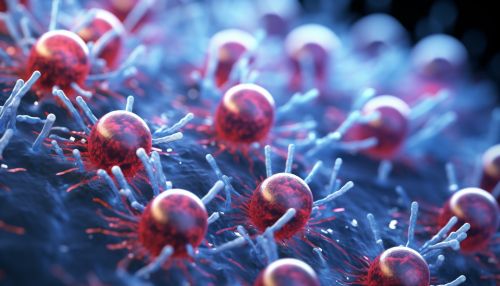Thermococcus gammatolerans
Introduction
Thermococcus gammatolerans is an extremophilic species of archaeon that is known for its remarkable resistance to ionizing radiation. This organism was first isolated from hydrothermal vents in the Guaymas Basin, located in the Gulf of California. The species name "gammatolerans" is derived from the organism's ability to tolerate high levels of gamma radiation.
Classification and Discovery
Thermococcus gammatolerans belongs to the domain Archaea, which is one of the three primary domains of life, alongside Bacteria and Eukarya. Within the Archaea, it is classified under the phylum Euryarchaeota, class Thermococci, order Thermococcales, family Thermococcaceae, and genus Thermococcus.
This organism was discovered in 2003 by a team of French researchers led by Patrick Forterre and Karim Benzerara. The team isolated the organism from samples collected from the hydrothermal vents in the Guaymas Basin.


Biological Characteristics
Thermococcus gammatolerans is a hyperthermophilic archaeon, meaning it thrives in extremely hot environments. The optimal growth temperature for this organism is around 88 degrees Celsius, and it can survive in temperatures up to 103 degrees Celsius. It is also a facultative anaerobe, meaning it can grow in both the presence and absence of oxygen.
The cells of Thermococcus gammatolerans are irregular cocci, typically 0.8 to 1.5 micrometers in diameter. They are motile, using multiple flagella for locomotion. The cell wall is composed of a single layer of protein, which is a characteristic feature of the Thermococci class.
Radiation Resistance
One of the most notable characteristics of Thermococcus gammatolerans is its extraordinary resistance to ionizing radiation. It holds the record for the most radiation-resistant organism known to science, capable of surviving doses of gamma radiation up to 30,000 grays. For comparison, a dose of 5 grays would be lethal to a human.
The mechanisms underlying this radiation resistance are not fully understood, but several hypotheses have been proposed. One theory suggests that the organism's DNA repair mechanisms are particularly efficient. Another theory posits that the organism's cell membrane may play a role in protecting the cell from radiation damage.
Genomic Features
The genome of Thermococcus gammatolerans consists of a single circular chromosome, approximately 2 million base pairs in length. The genome has been fully sequenced, revealing a high GC content (approximately 52%) and the presence of numerous genes involved in DNA repair and replication.
The genome also contains several unique features, such as the presence of introns in some genes, which is unusual for prokaryotic organisms. Additionally, the genome contains a large number of mobile genetic elements, including transposons and plasmids, which may contribute to the organism's adaptability and radiation resistance.
Ecological Role and Applications
Thermococcus gammatolerans plays a significant role in the ecology of hydrothermal vents, contributing to the cycling of sulfur and other nutrients in these extreme environments. It is capable of reducing sulfur compounds to hydrogen sulfide, a process that is coupled to the oxidation of organic matter.
The remarkable radiation resistance of Thermococcus gammatolerans has also sparked interest in potential applications in biotechnology. For example, the organism's DNA repair mechanisms could potentially be harnessed for the development of new treatments for radiation damage in humans. Additionally, the organism's ability to survive in extreme conditions could have implications for the search for extraterrestrial life.
See Also
- Deinococcus radiodurans - Another highly radiation-resistant organism
- Extremophiles - Organisms that thrive in physically or geochemically extreme conditions
- Hydrothermal vents - A type of underwater geysers known for their extreme conditions and unique ecosystems
